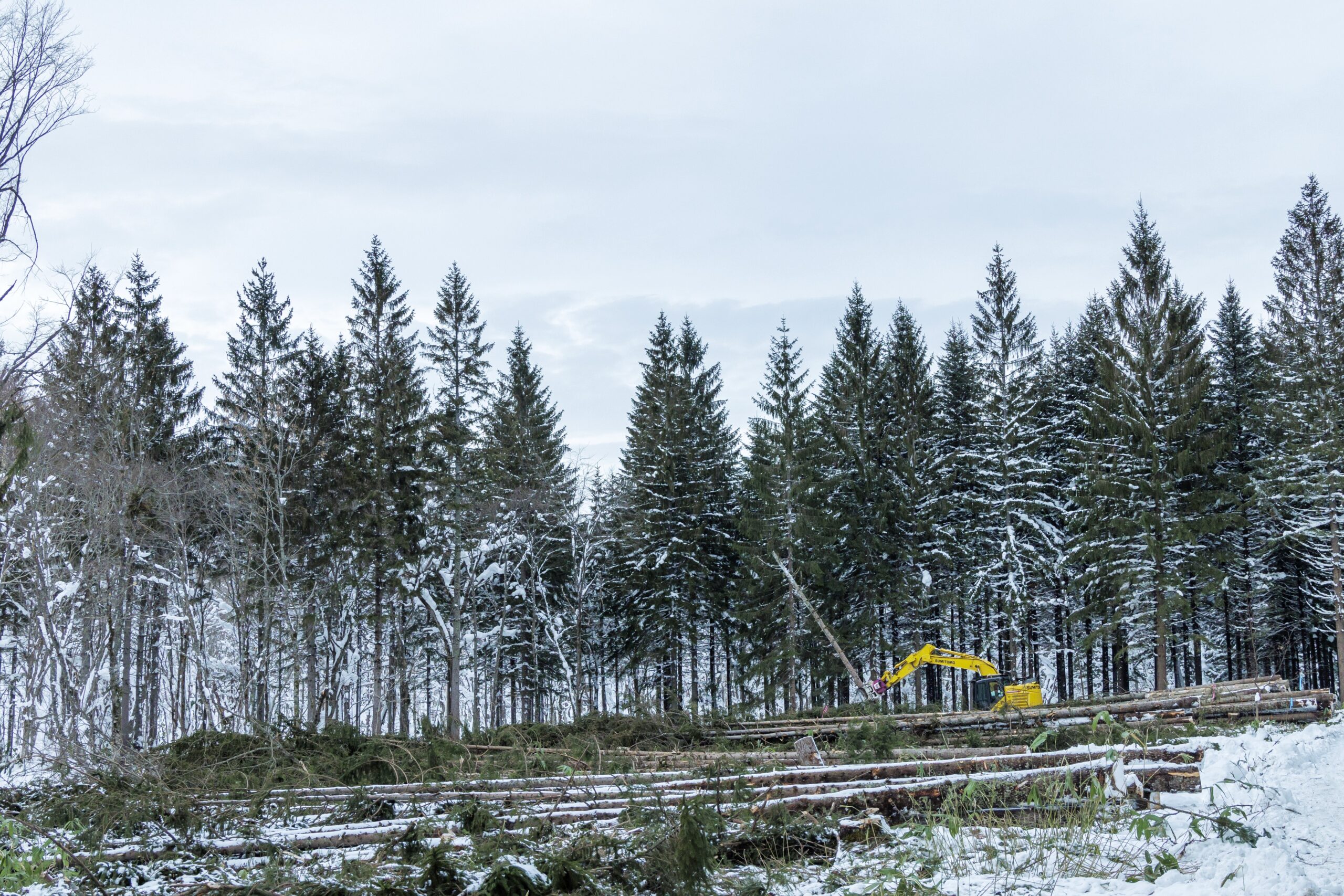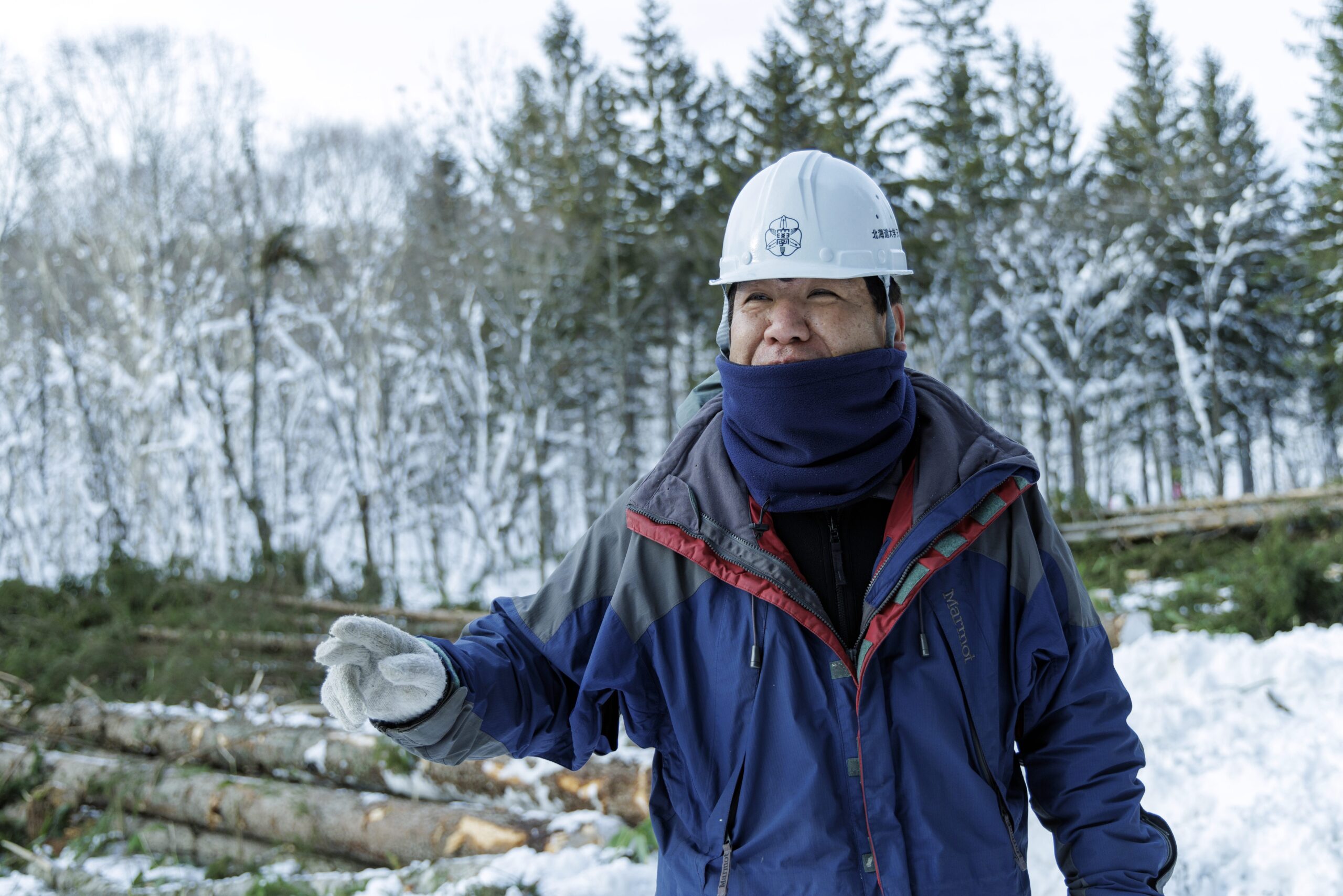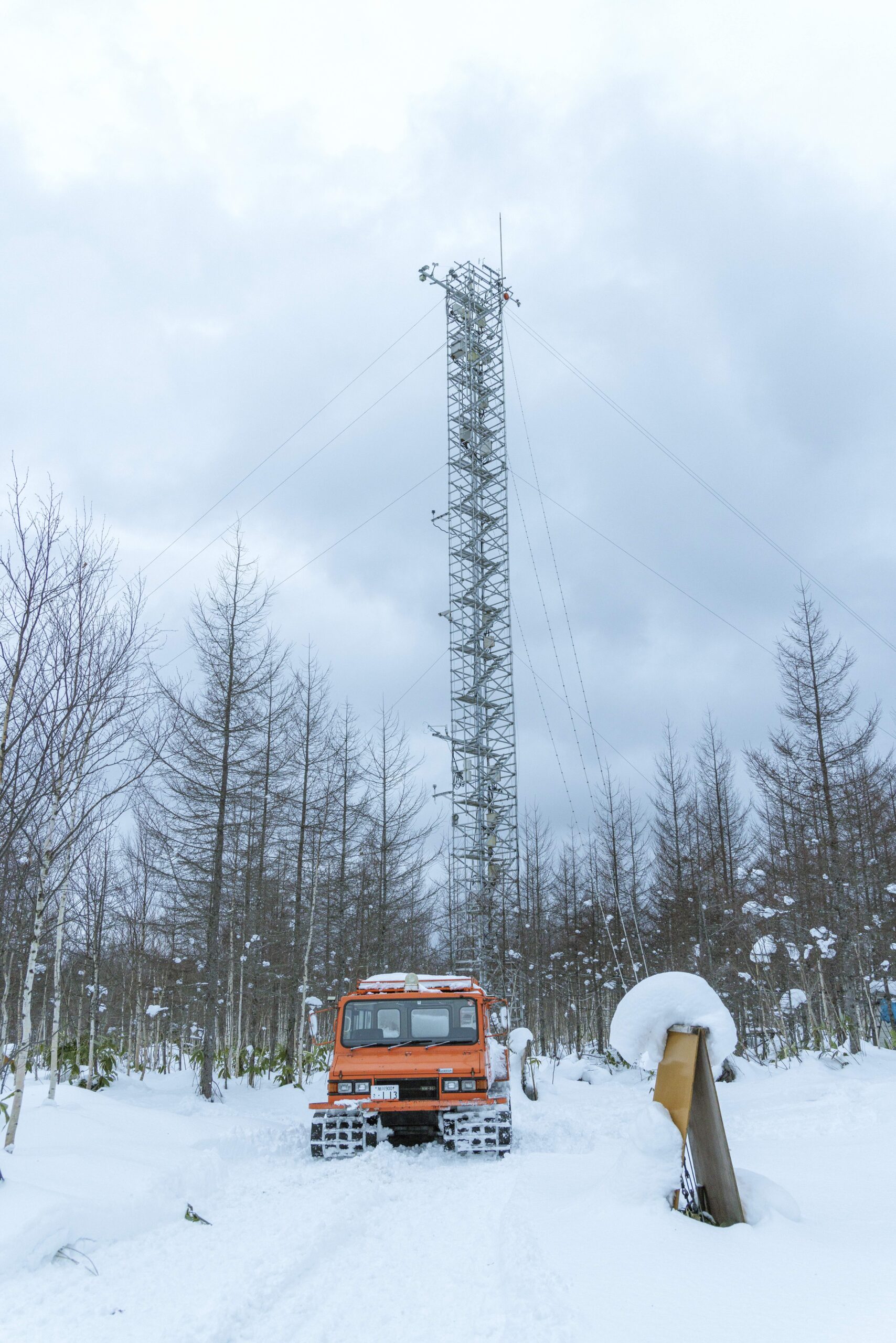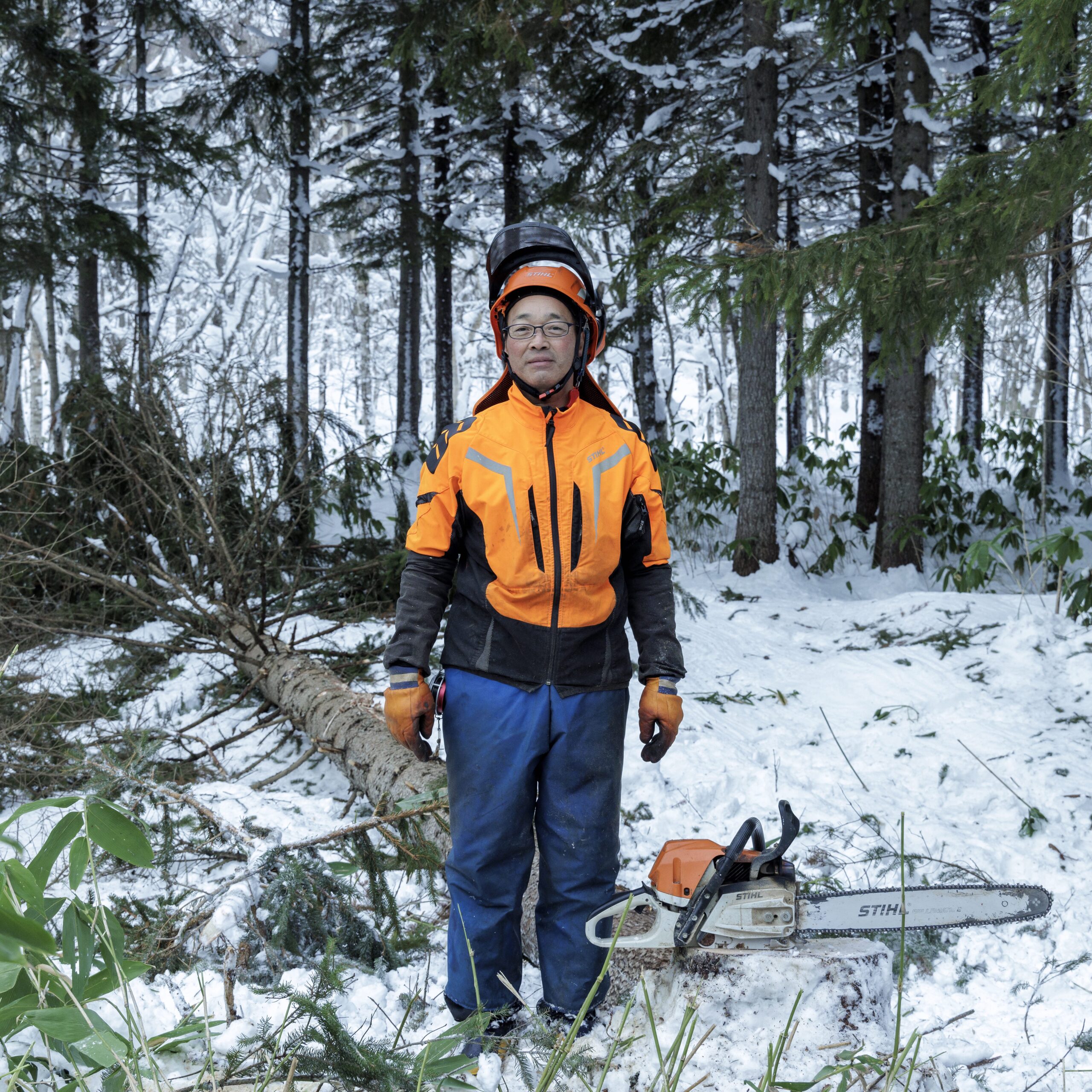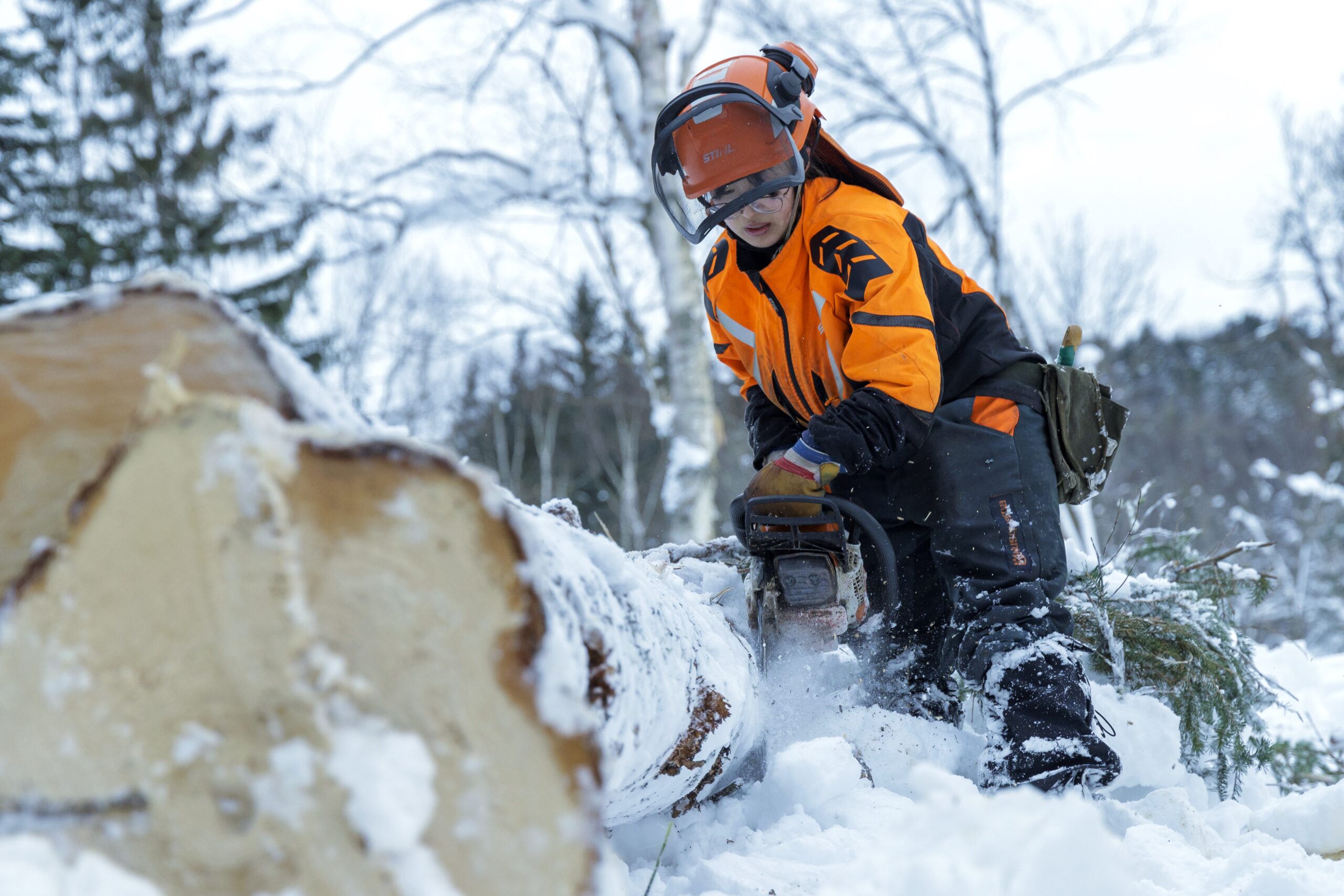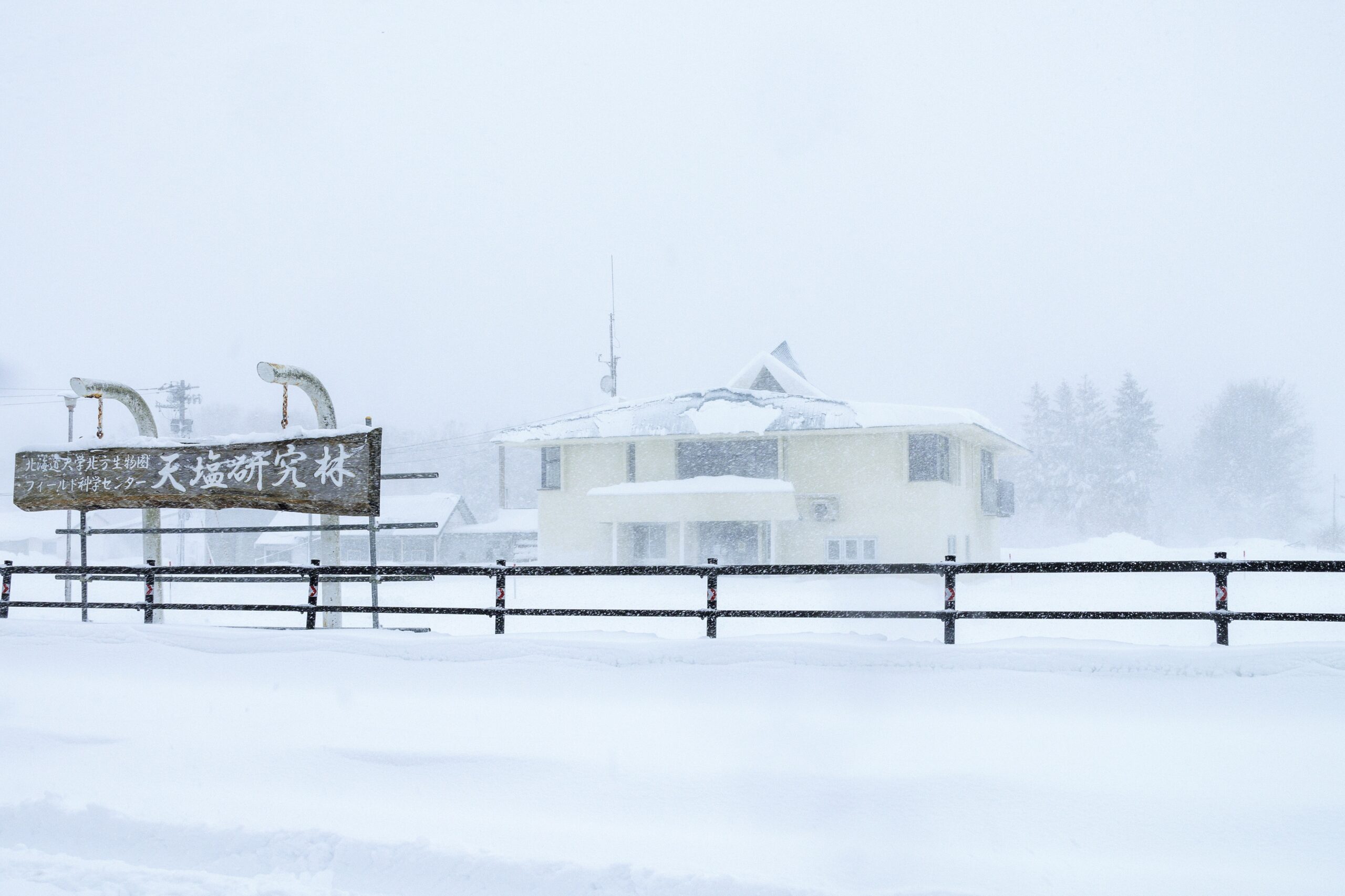Japan’s northernmost experimental forest: a showcase of future forest development
Research Highlight | June 23, 2023
This article was published in the Spring 2023 issue of Litterae Populi. The full issue can be found here.
The Teshio Experimental Forest has not only served as a site of research and education of the University, but also as a property where trees have been grown for business purposes. We are making the most of the natural environment and vegetation of Japan’s northernmost research forest to create a forest with even more diverse functions.
Japan’s northernmost university research forest
The Teshio Experimental Forest is Japan’s northernmost university-owned forest. It is located on the 45°N in the latitude. It is about 300 km north of the Sapporo Campus—a 5-hour drive. It was established in 1912 as the Toikanbetsu Experimental Forest of the Agricultural College of Tohoku Imperial University, which preceded Hokkaido University. It covers an area of about 22,500 hectares, equivalent to 4,800 times the size of Tokyo Dome baseball stadium. The Teshio Experimental Forest and its neighboring Nakagawa and Uryu experimental forests are famous as a trio of northern forests covering a total area of over 60,000 hectares. The Teshio Experimental Forest is one of the world’s largest research forests owned by a single university.
Special soil and flowers that bloom only here
The forest area experiences heavy snowfall and the annual average temperature is about 5°C. The western part of the forest comprises a mixture of coniferous and broadleaved trees, which are typical of Hokkaido, while the eastern part is globally valued pure forest of Sakhalin spruce. “These three northern forests show similar vegetative composition, but the Teshio Experimental Forest has more conifers, which are suited to cold climates, than the other two. The reason for the domination of the Sakhalin spruce is not only the climate, but also the geological conditions,” says Professor Kentaro Takagi, the director of the Teshio Experimental Forest at the Field Science Center for Northern Biosphere.
In the eastern part of the forest, ultramafic rock called serpentinite is widespread, and the soil here resists vegetation establishment by general plants. Pure forests of the slow-growing Sakhalin spruce have developed under these special soil conditions that are unsuitable for the growth of other tree species. Growing slowly over hundreds of years, Sakhalin spruce exhibits closely spaced annual rings, making it ideal for precise processing. The wood was once prized for musical instruments. The Teshio Experimental Forest preserves Sakhalin spruce trees that are over 500 years old.
The vegetation in serpentine zones tends to be unique. In addition to the Sakhalin spruce, several other endemic species are found in this zone. Teshio-kozakura (Primula takedana) of the primrose family blooms only here, and attracts enthusiasts from all over Japan during its annual one- to two-week flowering season. Ozeso (Japonolirion osense) is found only in Teshio, on Mt. Shibutsu near Ozegahara in Nikko, and on Mt. Tanigawa. Blooming only in isolated areas, Ozeso attracts great scientific interest, and researchers from other universities regularly visit the experimental forest to study the plant.
Serving as a research field for the Brown Bear Research Group
The Teshio Experimental Forest abounds in wildlife, including the Ezo brown bear, Steller’s sea eagle, Japanese huchen, and cherry salmon. The unique value of the forest attracts researchers not only in forest science, but also in ecology, geology, and various other fields. The natural environment here is used for practical training of undergraduate and graduate students of Hokkaido University, as well as other institutions in Japan and beyond. Before the COVID-19 pandemic, the forest was used by a total of more than 3,000 people a day per year.
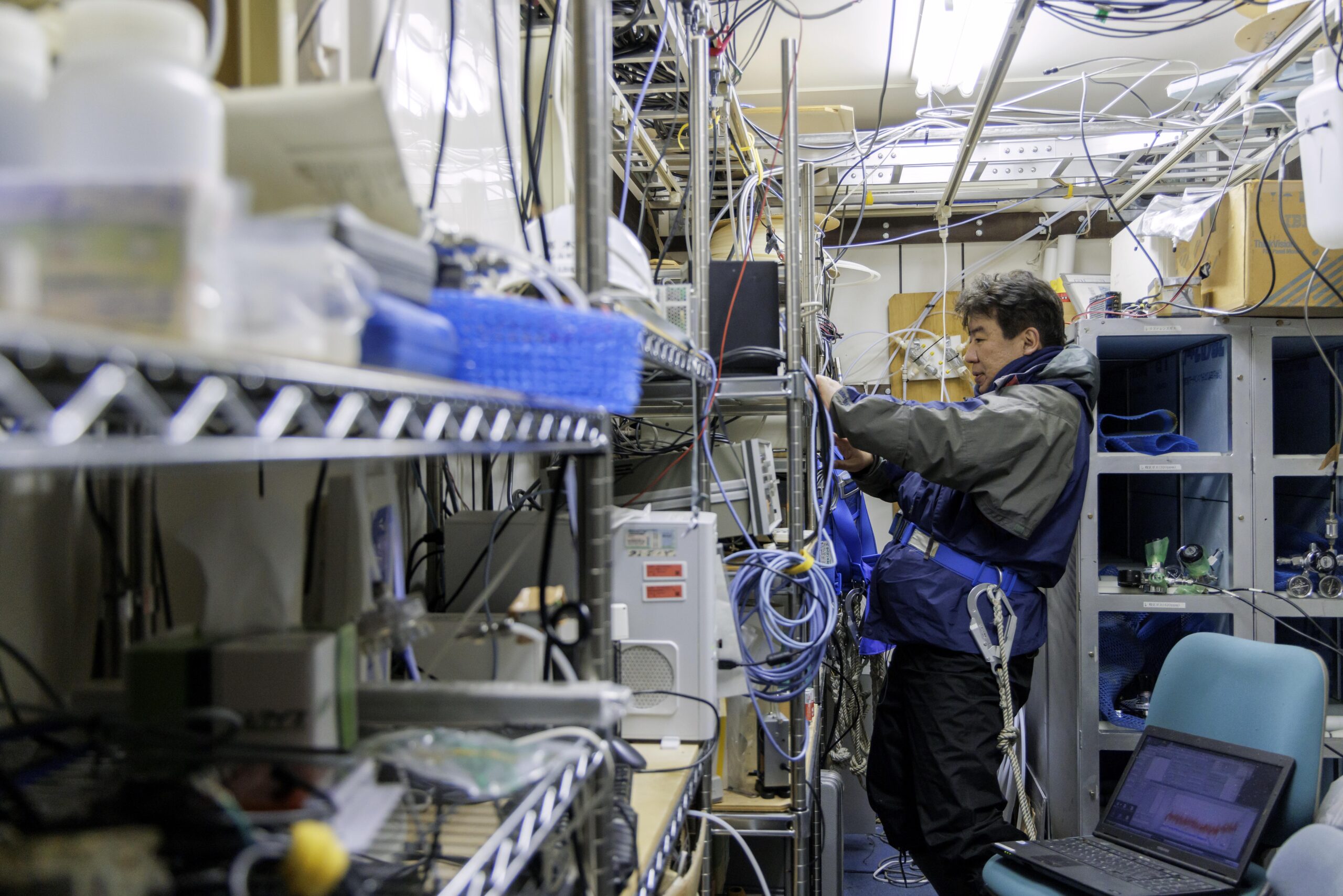
Inside a prefab hut located by the monitoring tower. In this computer room, researchers analyze various sets of monitoring data.
The Hokkaido University Brown Bear Research Group, a student club, also uses the Teshio Experimental Forest as their research field. For over 40 years since 1975, the group has conducted brown bear population and other surveys. Many club members draw on their field survey experience at the forest to become researchers at universities and research institutions. In July 2021, the Brown Bear Research Group published a paper on the results of their analyses of 40 years’ worth of data on brown bear traces like footprints and scats, under the initiative of the group’s alumni.
Large-scale, long-term research
The Teshio Experimental Forest, with its vast tracts of land, heavy machinery, and technical staff, has been the site of large-scale, long-term field research. One research project monitors the carbon cycle function of forest ecosystems. This project was launched in 2001 by Hokkaido University, the National Institute for Environmental Studies (NIES) Center for Global Environmental Research, and Hokkaido Electric Power Company’s Research and Development Department to clarify how human activities affect the forest’s ability to absorb CO2. In this project, researchers cut down trees in a 13.7-hectare area and planted about 30,000 seedlings in the clear-cut area. They have been monitoring how the forest’s CO2 absorption changes through the processes of logging, planting, and growing of trees long-term. During the initial seven years after logging, more CO2 was emitted than was absorbed, but in the eighth year this trend was reversed, and CO2 absorption began to outpace CO2 emissions. It took as long as 18 years for the forest to recover all the CO2 emitted into the atmosphere due to the logging. The infrastructure of this ongoing monitoring site has also been used for many other studies, including those on the material cycle in river basins, CO2 emissions from soil, and numerical simulations. Professor Takagi mentioned, “We all came together to plant seedlings. While continuing various studies, we predicted that we would be able to recover all the CO2 released by clearing trees by the time of the 2020 Tokyo Olympics.”
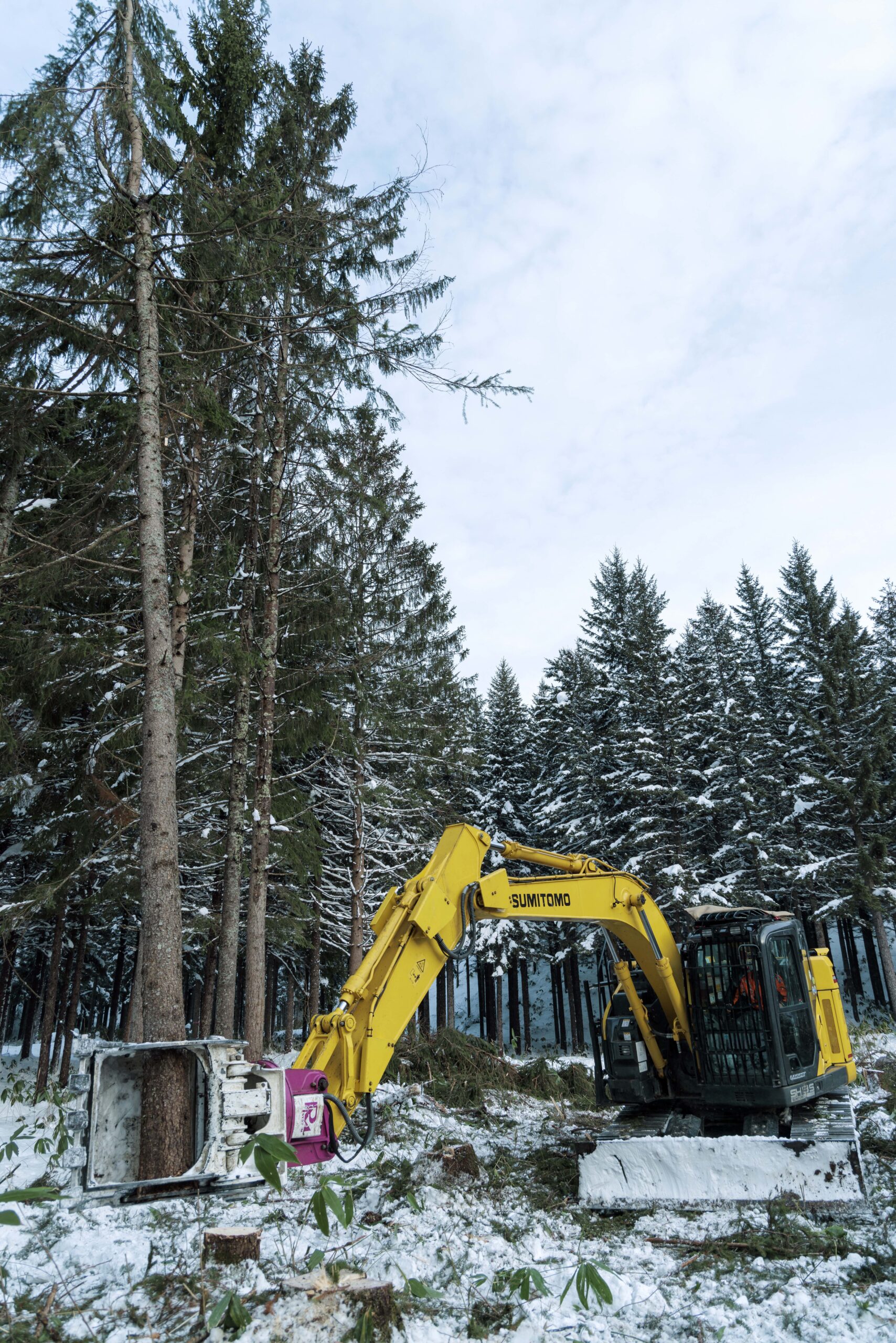
Work with a high-performance forestry machine called Feller Buncher Zaurus Robo. This heavy machine builds forest roads, fells trees, and collects felled trees.
Another project is a soil warming experiment that began in 2007. This field study will examine whether or not a long-term, 3°C elevation in soil temperature will accelerate carbon decomposition in the soil. Forest inventory studies for the entire Teshio Experimental Forest are also being conducted from ground-based and aircraft measurements. Long-term monitoring data on the ecology and environment of the forest have been collected and made publicly available for use by researchers worldwide.
Superb artisanship and state-of-the-art machinery
When asked about the appeal of the Teshio Experimental Forest, Professor Takagi modestly replied, “I’m grateful that people of different backgrounds use the forest despite its geographical disadvantage. I think another attraction is its relatively high wood production.” The Field Science Center for Northern Biosphere, of which the Teshio Experimental Forest is a part, introduced state-of-the-art, high-performance forestry machinery about two years ago, and the efficiency of wood production has skyrocketed. The machines have been used in parallel with the traditional method of logging with chainsaws. The Center has also devised ways to sell lumber, such as auctioning good lumber at precious wood markets. This has led to a twofold increase in profits since the machines were introduced.
Logging takes place in winter, when the trees are dry. Locally employed skilled forestry staff play a crucial role in logging here. Among other things, felling of standing trees requires excellent skills. One of the staff members, Yoshinobu Koike, is highly skilled in the quick felling of trees in the right direction, and has earned the trust of Professor Takagi and other faculty members. Reflecting on his work at the forest, Koike observes, “My work is diverse. For example, I operate heavy machines, plant saplings, and cut bamboo grass. I also sometimes help faculty members and students with their research. As a result, I’ve learned a lot myself. While logging in winter is hard, it is truly rewarding. Now that we have machines, it has become a little easier. I used to cut down about 20 trees a day with a chainsaw.”
Skilled young forestry staff are making vigorous efforts with the support of their colleagues to overcome the shortage of willing successors facing the forestry industry in general. Yurika Yamamoto, who is in her second year at the Teshio Experimental Forest, joined the forest staff at the recommendation of her high school teacher. She expressed her aspirations, saying: “At first, I was worried that I would not have the physical strength for logging, but with the support of my senior colleagues, I’ve made it. Since I was in junior high school, I have always wanted to pursue a career related to the environment. I think I’m doing important work because cutting down trees and maintaining forests help preserve the environment. I hope to learn to do a good job like my senior colleagues.” Yamamoto admires Koike as her mentor and has learned various techniques from him, including how to ensure safety.
Creating forests with diverse values and functions
In 2017, Hokkaido University and Horonobe Town, where the Teshio Experimental Forest is located, concluded a comprehensive partnership agreement to promote studies, education, culture, and local industry. Based on the agreement, wine barrels have been made from Japanese oak from the Experiment Forest. Wine, sake, and craft gin that have been aged in these barrels are sold in Horonobe and also serve as gifts in return for donations received as part of the tax-deductible donation program known as furusato nozei. Collaboration will continue across a wide array of fields, including the joint organization of work experience programs for junior high school students, a Teshio-kozakura flower appreciation event for enthusiasts throughout Japan, and open seminars for local residents.
Professor Takagi stresses the future of forest management: To ensure efficient wood production while protecting the academic and scenic value of the Experimental Forest, it is essential to manage it from a long-term perspective in consideration of the ideal function of each part of that forest.
At the Teshio Experimental Forest, efforts have been made to find a way to generate profits while protecting the valuable vegetation that has thrived in the challenging natural environment and distinctive soil. Today, the staff are taking another steady step in the snowy mountain forest toward the goal of becoming a sustainable research forest in the future.
This article was published in the Spring 2023 issue of Litterae Populi. The full issue can be found here.

